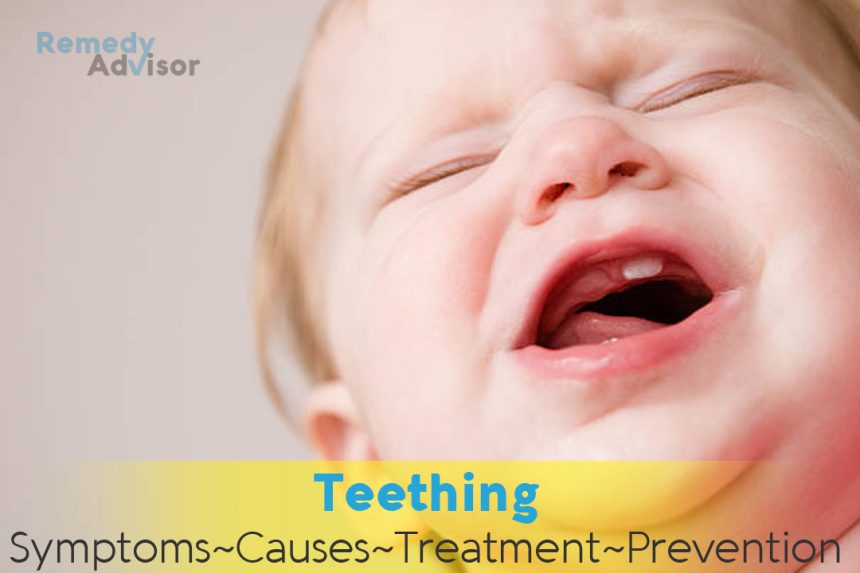What is it
When a child’s new teeth push through the gums, the process is called teething (also known as tooth eruption). It usually begins between the ages of four to eight months and ends around the third birthday. Of the 20 primary teeth, the 8 incisors (sharp front teeth) come in first and are typically all in place at 12 to 14 months. These are followed by molars (back teeth used for chewing) and canines (pointed teeth located between molars and incisors).
As these teeth work their way through the gum tissue, the gums can become swollen and tender, and a teething child may fret, cry, be unwilling to eat, and have trouble sleeping. It is not clear, however, whether these and other symptoms associated with teething are due to tooth eruption. For example, most teething children drool frequently, but the drooling may be caused by the normal development of the salivary glands. Teething has also been blamed for causing infections and high fevers, but these may be separate problems that occur simultaneously with the emergence of new teeth.
Symptoms
- Drooling increases.
- Fingers are put in the mouth more often.
- Gums can become red and/or swollen.
- Irritability may increase.
What causes it
Teething is a normal aspect of a child’s development.
What if you do nothing
Any teething-related discomfort, which varies in intensity from child to child, is almost always harmless and temporary.
Home remedies
Because stimulating the gums helps alleviate am discomfort, a baby who is teething will often chew on fingers and other hard objects. Here are several ways that a parent can help.
Give your child an object to teethe on
Make sure that the object is large enough that your child can’t swallow it or choke on it. Usually, a hard rubber pacifier is the best choice. Avoid plastic objects because they can splinter and harm the child. A chilled teething ring or a metal spoon can help numb irritated gums. (But don’t use a frozen object; a baby’s mouth can get frostbite.)
Do not tie a teething ring around your child’s neck; it can become a strangulation hazard.
Massage the gums
Rub the child’s gums gently with your little finger for a minute or two. Make sure your finger is clean. Don’t rub aspirin on the gums; not only can it cause irritation, but it also may be dangerous if swallowed.
Skip the bottle at bedtime
Do not lull a baby to sleep with a bottle of milk, either at nap time or at night. If milk stays in constant contact with the teeth, tooth decay can result. Milk should be used for feeding, not for teething or to quiet your child.
Keep your child’s face from chapping
To prevent chapping on the cheeks and around the mouth caused by excessive drooling, rub a thin layer of petroleum jelly on his or her face.
Clean gums and new teeth regularly
Clean your child’s gums and new teeth twice daily (especially after bedtime feedings) with a clean washcloth, a soft toothbrush, or a piece of gauze. This reduces the amount of bacteria present on the gums, decreasing the risk of infection and irritation.
Prevention
Teething is a natural process.







